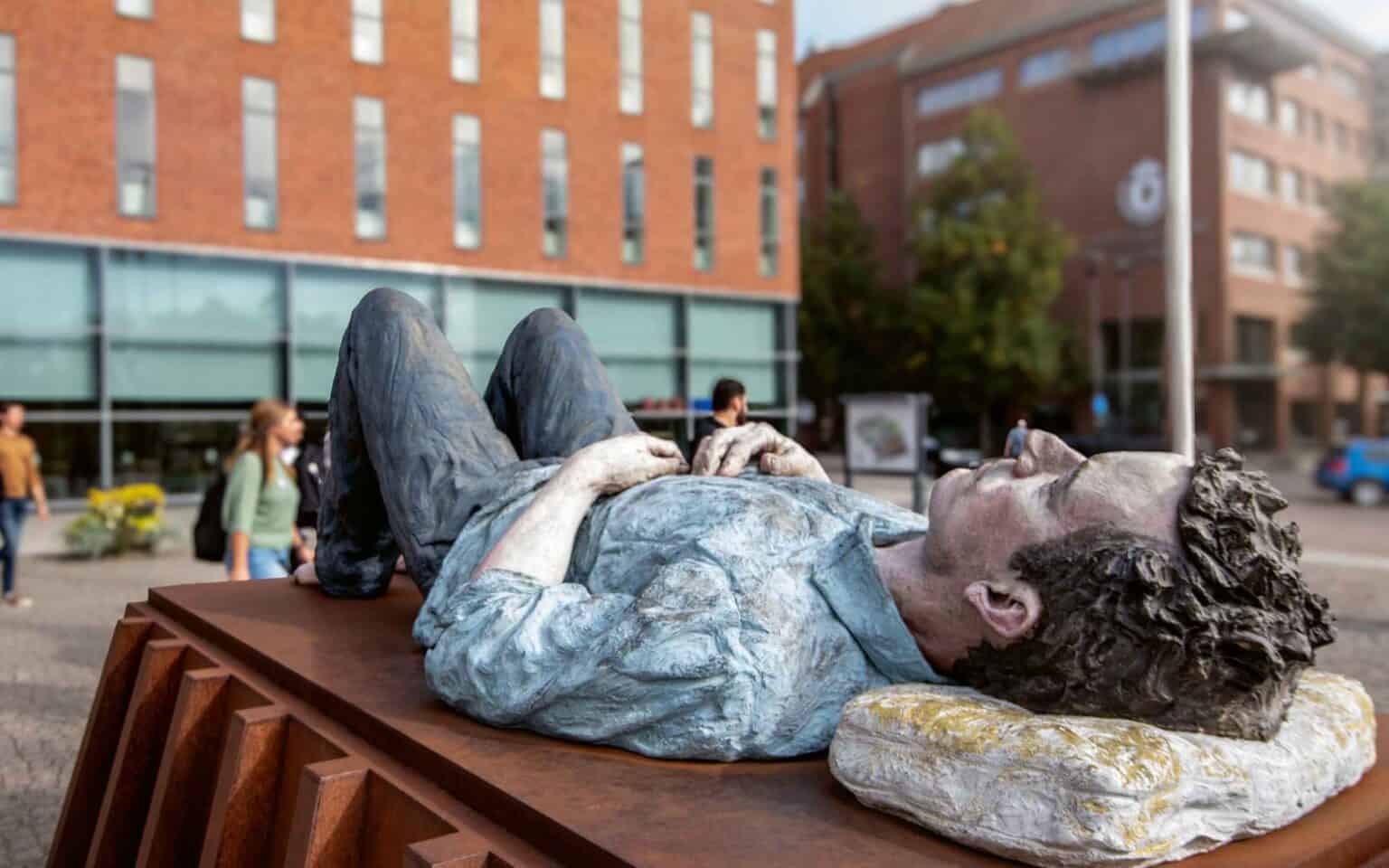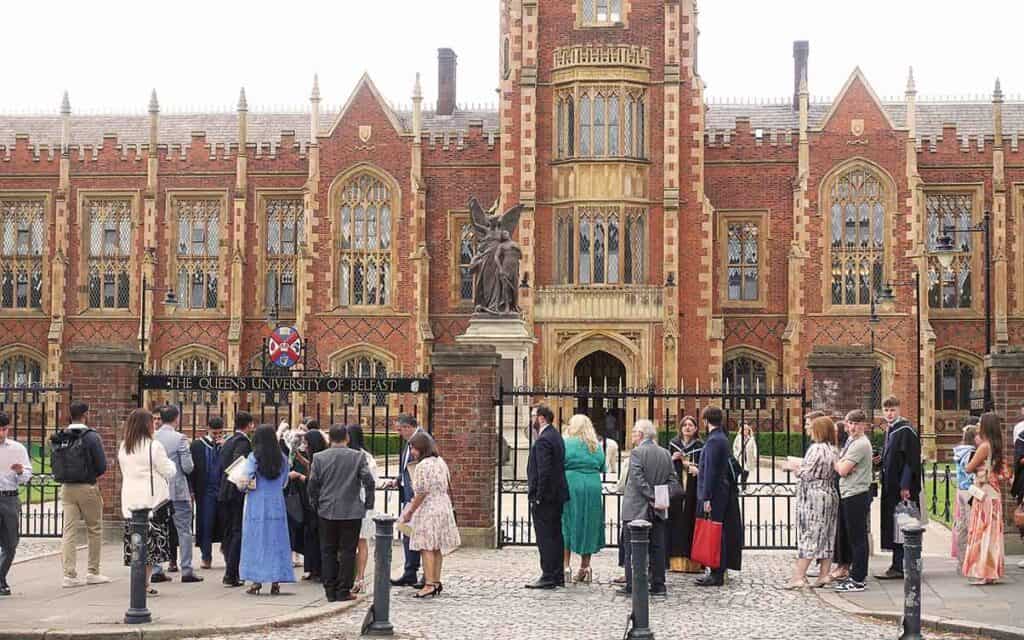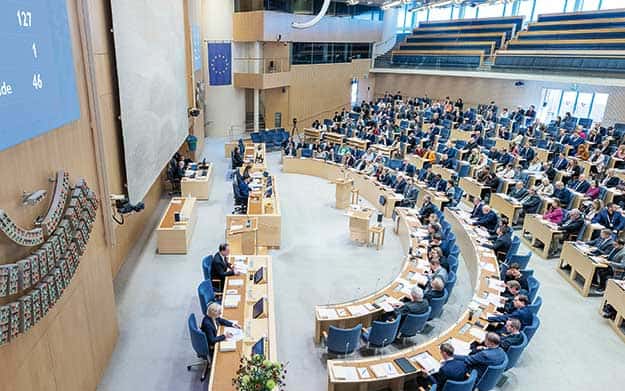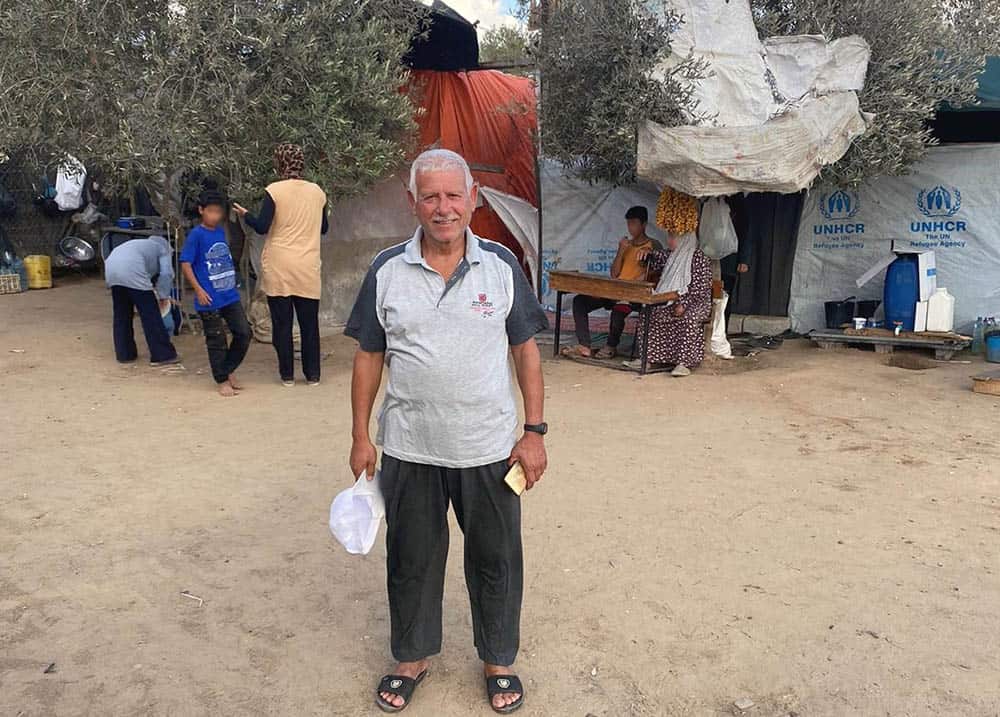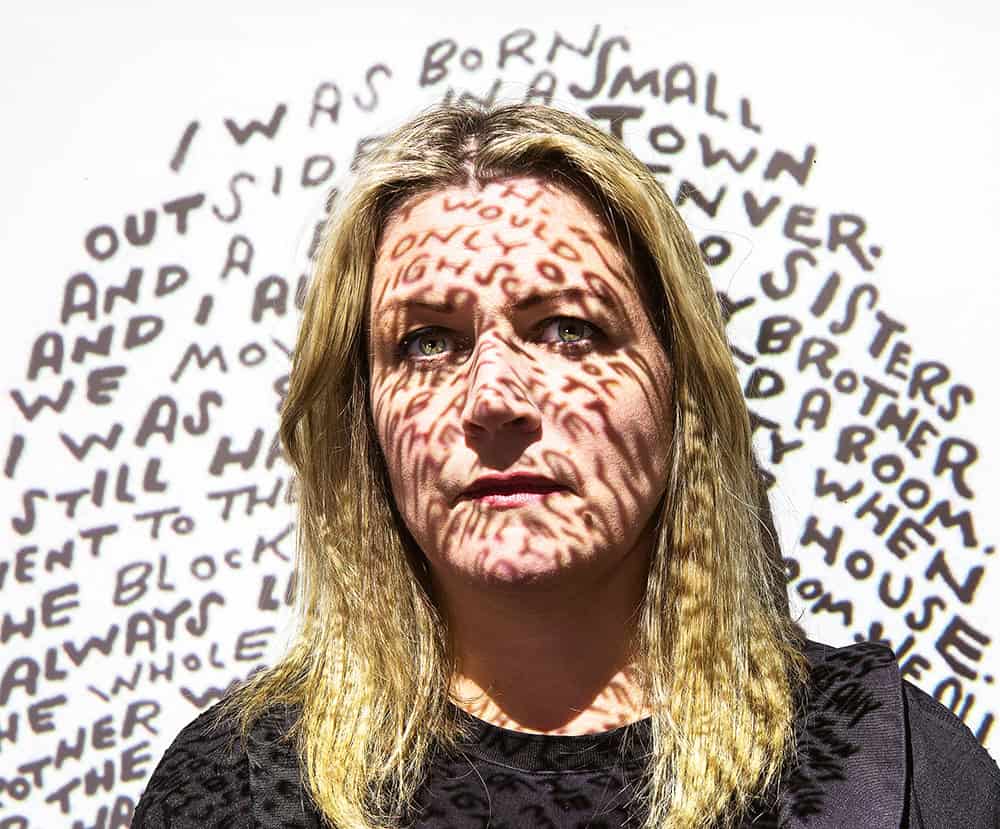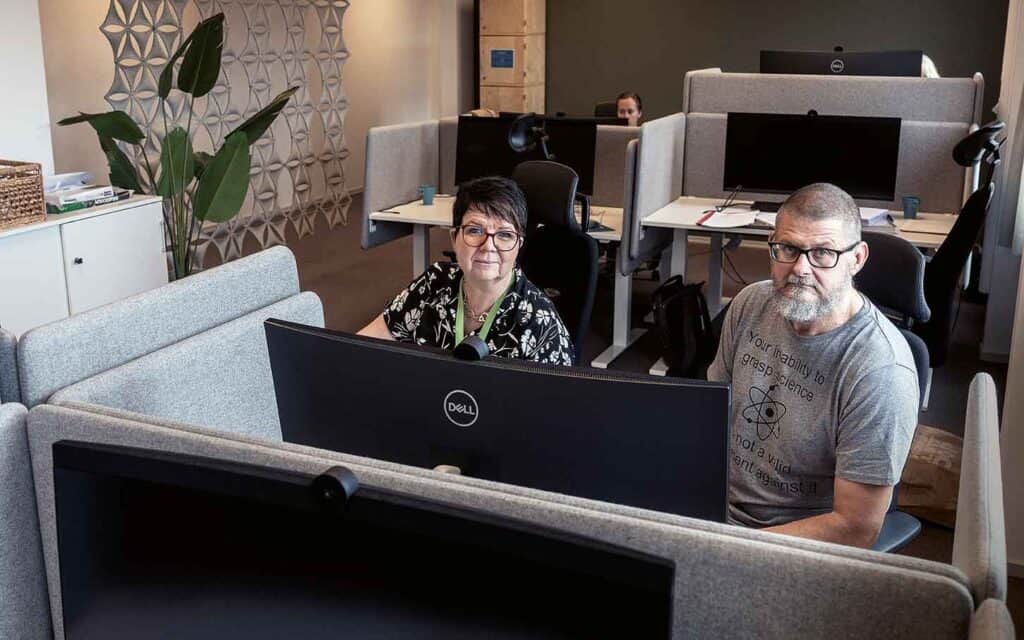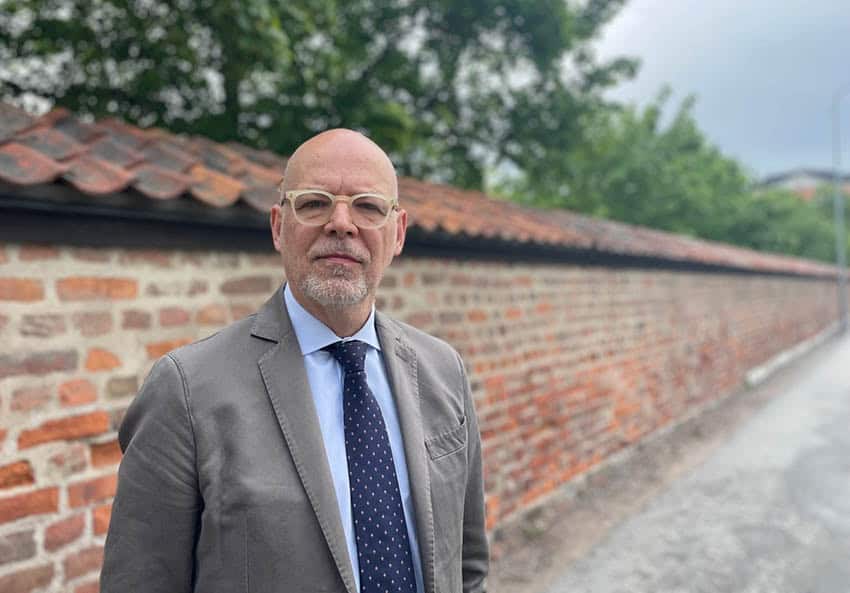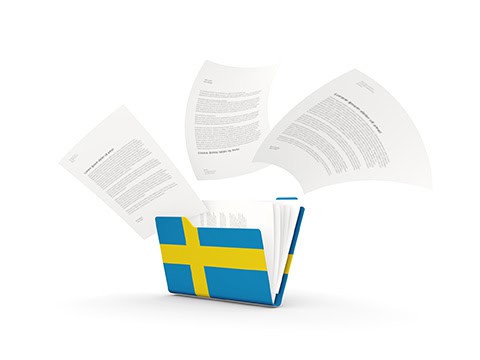Teacher education in Borås has just gone through its worst crisis to date. But as the academic year kicks off, there are no signs of concern. The new students criss-cross the campus to various orientation activities led by student buddies wearing colourful t-shirts and carrying signs with the class names on.
Universitetsläraren’s reporters are met at the reception by Petra Pauli and Kajsa Paulsson, acting head and deputy head of the teacher training department at the university. They lead us through winding corridors to a small conference room on the fifth floor and begin by describing the past academic year as difficult.
After admission numbers had fallen for several years in a row, the financial deficit in 2023 was approximately SEK 23 million. A decision was therefore made to reduce the number of employees. At the beginning of the year, 14 university teachers accepted severance packages which meant that they received salary and had no obligation to work during their notice period.
But more savings needed to be made, so twelve teachers were given notice of redundancy. Following co-determination negotiations, four of these have actually been made redundant, four have been reassigned and four have found other jobs.
“The negotiations between the employer and the trade unions ended in agreement,” says Petra Pauli. “However, the resulting redundancy notices given to the twelve employees were met with a level of anger that I have never seen before. I didn’t think they could provoke such emotions. It was an incredibly difficult time, not only for the employees who were given notice, for also for those who were to remain and for us as employers.”
She emphasises that their goal in the negotiations was to minimise damage to the educational programmes; the aim was to ensure that it would be possible to continue to run the department’s programmes.
Selma Music, a local elected representative of Saco-S, assistant professor and doctoral candidate at the teacher training department, agrees that it was a turbulent spring at the department.
“First, there was criticism that the process was not transparent,” she says. “Then when the order of priority groups were drawn up, the criticism was that people had been placed in the wrong groups. This could perhaps have been avoided with better communication.”
She emphasises that the negotiations concerned a lack of work situation. “We union representatives had a lot to do, and it was due to our work that the end result was so good. You can say that it was still a good negotiation result in the end. Of the twelve people who were given notice, four have been made redundant and all the others have either been reassigned or chose themselves to leave, so it was a better outcome than what was feared at the beginning. Although it is of course sad that we have lost colleagues and competence.”
Music wonders why the University of Borås has suffered a crisis in teacher training.
“I think that we could have been warned much, much earlier. The university has a lot of finance people and controllers who should be familiar with the university’s financial situation. You can calculate how much money comes in and how many employees there are at the department. Perhaps better planning could have helped us to be a little better prepared and more aware of the financial situation. But the news came out of the blue. We had good finances one term, and then the next term we had a 20 million deficit.”
Between interviews, we try to tag along with the student teachers to their various activities. We meet student buddy Mathilda Savhammar, who is waiting outside the classroom where the new students are being introduced to the next part of the induction. She herself will start year two of the teaching programme. She did not notice much turbulence during the spring term.
“There is nothing clearly noticeable in the education, other than the fact that some of our teachers have left. Otherwise, we have not noticed anything. It is not something we have talked about much.”
How does the autumn look?
“We are studying the same courses and being taught in the same way as before, although the courses may be taught by other teachers. Otherwise, I don’t think there’s that much of a difference,” says Savhammar.
She has worked at schools previously and takes the opportunity to sing the praises of teacher training. “Being a teacher is great fun. Apply to the teacher training programme, it’s fantastic!” she adds.
Now the new students are pouring out into the corridor. They have been given an assignment: to describe their dream school. Some confusion soon a certain arises.
”Which room should we go to? And where is the equipment?” While they are solving those questions, new student teacher Sanna Kroon tells us that they do not know anything about the turbulence of the spring term.
“No, this is our first term, so we haven’t noticed anything. But I think things will be fine,” she says. “The schedule looks good. So I think it will probably all work out. And yes, it will be fun.” She is starting the primary school teacher programme, focusing on years 4–6.
In total, the department has reduced its staff by a third in the past year, all of whom were university teachers. The department has gone from 72 full-time equivalents to 46.
We go back to Petra Pauli and Kajsa Paulsson, who tell us that one reason for the reduction in staff was the ”lack of funding, which led to a lack of work”, which arose due to reduced student numbers on both courses and programmes.
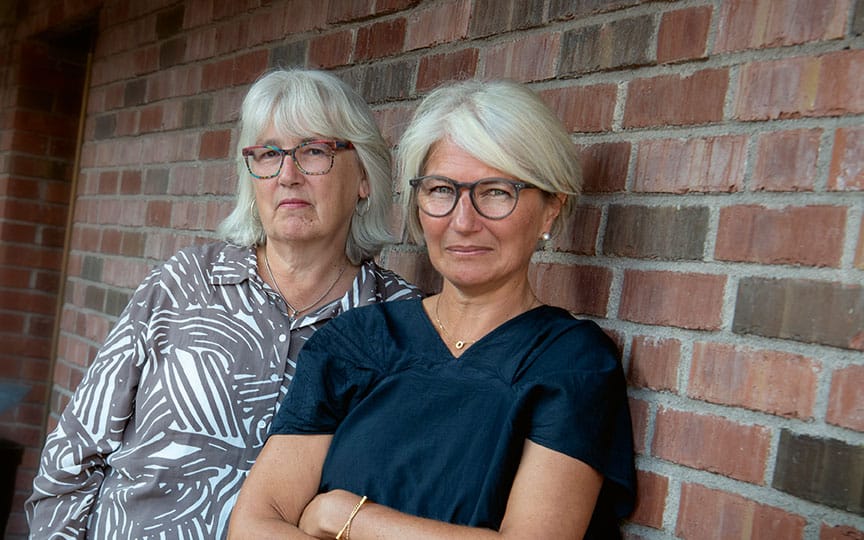
This has led to the department being forced to pause some programmes and run some programmes with few students.
“Going forward, we will have to find ways to combine courses and schedule our staff in a way that provides conditions for creating a good working environment, even though we are now much smaller,” says Paulsson.
The restructuring and the reduction in the number of teachers during the spring have put a strain on the organisation, and they have had think in new ways in order for the teaching to work.
“While there has been harsh criticism of the restructuring process, there has also been an incredible level of commitment during this difficult period,” says Pauli. “Our staff has done a fantastic job of rewriting curricula and course plans. It has not only been difficult because we had to give people notice, but we have also had to do a huge amount of reorganisation to be able to roll out the training courses with significantly fewer hours and significantly fewer teachers.”
The question is why the University of Borås seems to have been hit harder than other teacher training programmes.
“We had a large staff,” says Paulsson. “That was actually both due to a desire to create good conditions for giving students education and to respond to pressure from the state to provide more student places. Both of these meant we had to recruit, and then things did not go as planned when the number of students fell drastically over a short number of years. But that was a scenario that was difficult anticipate.”
“I have worked previously with teacher training at another university,” Pauli adds, “and if I compare with back then, the allocation of teaching hours is more generous in Borås. With the benefit of hindsight, we can see that we should have been quicker to adapt the number of teaching hours that we have allocated according to the size of the student groups.”
The financial concerns are increased by the fact that the large corona cohorts are now on their way out of higher education and that the subsequent cohorts are significantly smaller. In addition, there is what is known as the roll-out effect.
“Perhaps there are 44 students in a student group when they start and just eleven of them left by the time they graduate. This means that the university loses a lot of money, both through lost full-year student places and through the performance-based part of the per-capita funding. Since the largest part of our income comes from full-year student places, this has a rapid impact in the form of deteriorating finances,” Pauli explains.
The University of Borås is far from alone in experiencing a crisis in teacher education. “We see that very clearly when we are in contact with other higher education institutions,” says Pauli, “and we are now hearing that there are several other universities that are planning issue notices of redundancy. And many others are very, very worried because they can see that they are actually facing the same fate as us.”
In a student kitchen in the labyrinthine Balderhuset building at the university, we meet former senior lecturer Johanna Mellén. She is heating her lunch in the microwave before eating quickly during our interview.
Last year, she and some colleagues wrote a debate article in the daily newspaper DN on the crisis in teacher education: ”Now the Swedish teacher education bubble is bursting”. She expands on that criticism.
“For a long time, there has been this idea that we have too few students on teacher training programmes, and that the fault lies with the programmes. And so for many years, there has been a fairly high volume of applications. There have been many students because there have been large groups of young people who have been able to commence programmes, above all teacher training, because there are low admission requirements.”
She believes that students have been pumped into teacher training courses at universities.
“We have constantly taken in applicants from the reserve lists, constantly added to the reserve intake until we have been at full capacity and then some. Plus the number of study places has also been inflated so much. In this way, we have overfished the cohorts of young people.
And now we have reached a point where there are not very many potential students because birth rates were lower 20-24 years ago.”
In the opinion article, Mellén calculated that for a long time, admissions to the teaching programmes have been fairly constant in relation to the size of the cohorts. And when the cohorts decrease in size and you have already taken in all the people who were on your reserve lists, there are no more young people left to recruit.
“There aren’t pools of people swimming around and happy to be caught by different higher education programmes.”
Mellén believes that the brakes should have been applied in time. “With responsible planning and by making projections based on population statistics, you can predict to an extent how many people will apply, because admissions patterns are stable.”
“But when they saw this coming, they could also have thought about how to plan teacher training on the basis of reduced student numbers. Can we somehow use our staff in a different way? Can we perhaps invest in research for a certain period to retain teacher trainers until the cohorts increase in size again?”
She calls what has happened both a structural error and a system error. “This very real crisis is becoming visible now that it is largely too late. We see that here in Borås anyway. We do not have enough staff to deliver our teacher training programmes. We are reducing teacher-led hours by approximately 30 per cent. Quite simply, the budgets are going from small to disastrous.”
Mellén is among those who have had to leave the department. But instead of redundancy, she chose to accept an administrative position, while retaining her senior lecturer’s salary.
“I’m not bitter, but I am sad. Extremely sad about the way teacher training is treated, as well as the whole field of pedagogy. And sad that those of us who warned that this would happen have not been listened to. We said many, many times: ‘If you do this, this will happen. Is there really no other option?’ No, apparently there wasn’t. It was purely financial management,” she says.
Another person who is critical of how the redundancy process was conducted is Professor Anita Norlund. “The feeling is that we have not been listened to and that our anger has not been understood,” she tells us. “After all, we had shown clearly that people had been placed in the wrong order of priority groups and thought that these groups would be changed. But we didn’t receive any answers at all, and I think that particular frustration was absolutely the worst. There was just silence.”
She describes a situation before the autumn term characterised by improvisation and last-minute solutions.
“I have quite a lot of gaps in my schedule and I have research time as a professor, but for the first time in years I feel ‘How am I going to manage this?’ I have now been told that I will be supervising four master’s level projects starting tomorrow. And I haven’t even looked at the course and don’t know what they are going to do. I guess I will have to read up.”
Anita Norlund emphasises that society needs teachers.
“We need to turn out a certain number of teachers. So we might have to run courses and programmes with small numbers of students, but with higher student funding. The teacher training community, the parliament and vice-chancellors of higher education institutions should get together and talk seriously about how we should finance the professions that we need in society.”
She describes the situation that teacher education finds itself in as a national disaster. “But it is also a local disaster that they managed it as poorly as they did in Borås.”
Norlund is among those leaving the department.
“I was due to continue working for another three and a half years. But when things turned out like this, I decided to retire after the turn of the year. And it is entirely due of this. It’s so sad.”
Among those who remain at the teacher training department at the University of Borås there is concern about what will happen in the longer term. Local trade union representative Selma Music sums up the mood.
“We are trying to regroup now,” she says, “but once again it feels as if we are waiting for answers. What will happen next? Is this enough? Do we have enough money for the staff that are still here? And so on. It’s not a happy atmosphere.”
Sweden’s teacher trainers are now waiting for the ”Inquiry into Developing Teacher and Pre-school Teacher Training,” which is being led by former State Secretary Peter Honeth and will be presented in late autumn.
“One of the proposals being discussed by the inquiry is that the students must have at least a grade C in Swedish to be admitted. Should the proposal be implemented, it would hit teacher training programmes hard and radically change the conditions for the sector,” says Petra Pauli.
For the new student teachers in Borås, the first day of their term is coming to an end. As the afternoon sun still warms the balmy air, the new students flock excitedly and expectantly to the nearby Textile Fashion Center’s courtyard for the start of the fun part of the induction, where they will get to know their new classmates during the evening.
Numbers of new students have fallen sharply
For several of the basic teacher training programmes, those leading to pre-school teacher qualifications, primary school teacher qualifications, vocational teacher qualifications and subject teacher qualifications respectively, many who have applied for the programmes as their first choice are accepted.
At national level, the number of applications varies between 1 and 1.5 eligible first-choice applicants per person admitted. That makes it difficult for higher education institutions to accept more students than they already do. Additionally, the student completion rates of some of the programmes are also a challenge.
At the beginning of the corona pandemic, academic year 2020/2021, the number of new students on teacher training programmes increased sharply. Since then, admissions to all four programmes have declined sharply.
During academic year 2022/2023, 10,930 people started one of the four basic teacher programmes for the first time. This is a decrease of 15 per cent compared with 2021/2022.
In academic year 2022/2023, the number of new students was the lowest since academic year 2012/2013.
For programmes leading to the pre-school teacher qualification, the number of new students was the lowest ever.
Source: The Swedish Higher Education Authority’s 2024 annual report
